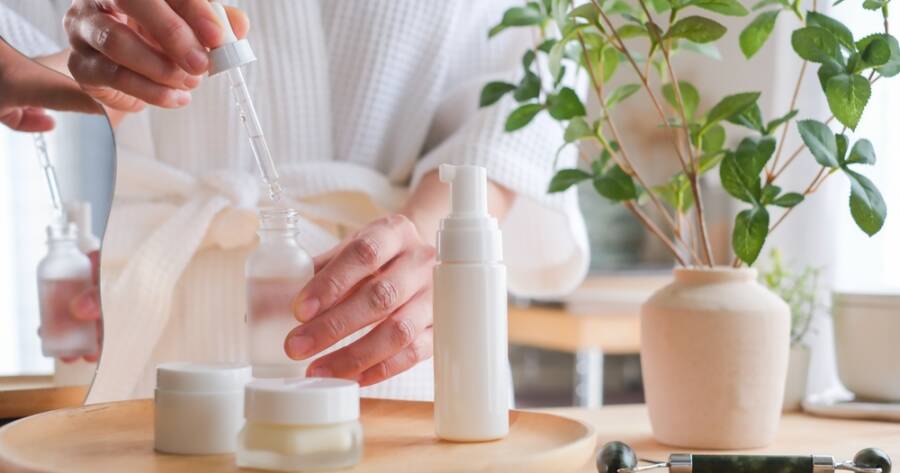When it comes to skincare, one size definitely does not fit all. The secret to a glowing, balanced complexion begins with knowing your skin type. Your skin’s unique needs determine which ingredients and products will truly work for you, and which might cause more harm than good. Whether you’re dealing with oiliness, dryness, or sensitivity, understanding your skin type can help you build a routine that actually delivers results.
1. Oily Skin
How to Identify It:
If your face gets shiny a few hours after cleansing, especially in the T-zone (forehead, nose, chin)—you likely have oily skin. You may also be prone to blackheads, whiteheads, and breakouts.
Your Ideal Products:
- Gel-based cleansers to deeply cleanse without stripping the skin.
- Oil-free moisturizers with ingredients like niacinamide or salicylic acid to help regulate sebum production.
- Clay masks once or twice a week to draw out impurities.
- Lightweight, non-comedogenic SPF to avoid clogging pores.
Avoid:
Heavy creams, alcohol-heavy toners, and overly aggressive exfoliants that can overstimulate oil glands.
2. Dry Skin
How to Identify It:
Dry skin often feels tight, rough, or flaky. You might notice dullness or even redness in colder months, and your skin may soak up moisturizer quickly.
Your Ideal Products:
- Creamy, hydrating cleansers that don’t foam too much.
- Moisturizers with hyaluronic acid, ceramides, and glycerin for long-lasting hydration.
- Facial oils to lock in moisture.
- A gentle exfoliant (once or twice a week) to remove dead skin cells without irritation.
Avoid:
Harsh cleansers, high concentrations of active acids, and products with synthetic fragrance that can dry you out even more.
3. Combination Skin
How to Identify It:
If some areas of your face are oily (typically the T-zone) while others are dry or normal, you’re dealing with combination skin. You may also experience seasonal changes in how your skin behaves.
Your Ideal Products:
- Balancing cleansers that remove oil without over-drying.
- Gel-cream moisturizers that hydrate without heaviness.
- Consider multi-masking—use a clay mask on oily areas and a hydrating mask elsewhere.
- Spot treatments for breakouts, rather than treating the whole face.
Avoid:
Using only mattifying products, which can dry out parts of your skin, or only rich creams, which can clog pores in oilier zones.
4. Sensitive Skin
How to Identify It:
If your skin reacts easily to new products, turns red, stings, or gets blotchy—especially after cleansing—you may have sensitive skin.
Your Ideal Products:
- Fragrance-free, hypoallergenic formulas.
- Look for soothing ingredients like aloe vera, centella asiatica, and colloidal oatmeal.
- Barrier-repair moisturizers with ceramides and fatty acids.
- Minimalist routines with fewer ingredients to reduce the risk of reactions.
Avoid:
Alcohol, essential oils, strong exfoliants, and harsh preservatives like parabens or sulfates.
5. Normal Skin
How to Identify It:
If your skin isn’t too oily or too dry, rarely breaks out, and feels balanced—congrats! You have what’s considered “normal” skin.
Your Ideal Products:
- Gentle cleansers that maintain balance.
- Lightweight moisturizers for everyday hydration.
- Occasional exfoliation and masking to maintain glow.
- SPF is still essential, no matter how “problem-free” your skin feels.
Avoid:
Be careful with overuse of actives or trendy ingredients that your skin may not actually need.
Product Recommendations
| Skin Type | Product | Cost |
|---|---|---|
| Oily | Hydrating Gel-to-Cream Cleanser | $24 (6.7oz) |
| Dry | BioOil Skincare Oil | $15 (2oz) |
| Combination | Kiehl’s Ultra Facial Oil-Free Gel Cream | $39 (1.7oz) |
| Sensitive | Deinde Barrier-Building Moisture Cream | $64 (1.7oz) |
The Bottom Line
Knowing your skin type helps you make smarter skincare choices and avoid wasting money on products that won’t deliver. The right routine doesn’t have to be complicated—it just needs to be customized to you. Listen to your skin, and it’ll show you exactly what it needs.
Still unsure about your skin type? Try observing how your skin feels mid-day without products, or consult a dermatologist for a more in-depth look.

